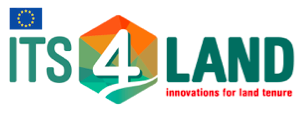its4land Key Exploitable Results (KERs)
Work packages 2 to 7 of the its4land project created different results which can be exploited by the land administration community in developing countries. These results will be bundled in a toolbox which will provide services and products which can benefit the land administrators and facilitate their work. The following table shows the key exploitable results (KERs) of each work package and their type, being a consultancy service or a software product:
| Work package | KER Type | KER Name (direct link) | KER Brief Description |
|---|---|---|---|
| 2 | Consultancy | Needs assessment | Consultancy services for needs assessment |
| 3 | Software | SmartSkeMa | Smart Sketchmap is a tool to record aspects of people to land relationships where the spatial component is captured using hand drawn sketch maps and described in a qualitative way (not surveyed) and then automatically transformed for further usage in a GIS |
| 4 | Consultancy | UAV workflows-Orthophoto Generator | Consultancy services for UAV-based data acquisition for land tenure |
| 5 | Software | Visible Boundary Delineator | A tool that facilitates image-based cadastral mapping by extracting visible boundaries automatically and by supporting the delineation procedure |
| 6 | Software | Publish and Share Platform for Land Administration Workflows | Platform with integrated tools to publish and share land information |
| 7 | Consultancy | Governance and Capacity Building | Consultancy services to apply the governance and capacity development models for the use of the its4land geospatial tools |
its4land toolbox concept
The innovative its4land toolbox concept is in line with the fit for purpose (FFP) land administration approach. While the project case countries of Ethiopia, Kenya and Rwanda have not clearly legislated for the application of this approach in their current land tenure recording processes, the its4land toolbox concept is still applicable, as it may improve workflows at government level, and serve the needs of communities on local and grassroot levels by providing software tools and services which they can use to record and secure their tenure rights. It also follows current trends in donor-funded reform agendas which fully endorse the FFP approach due to its community participatory character.

Recent Comments